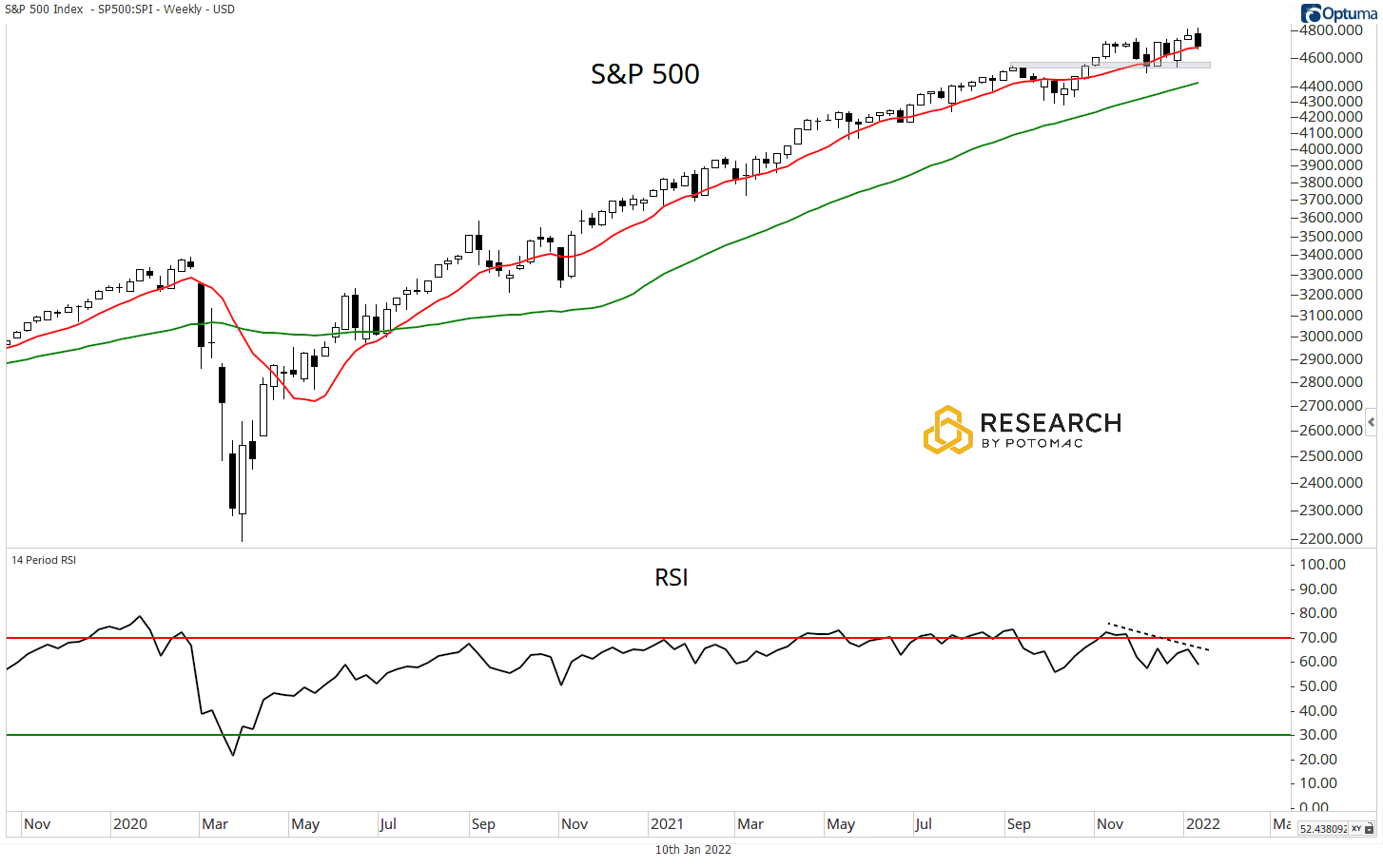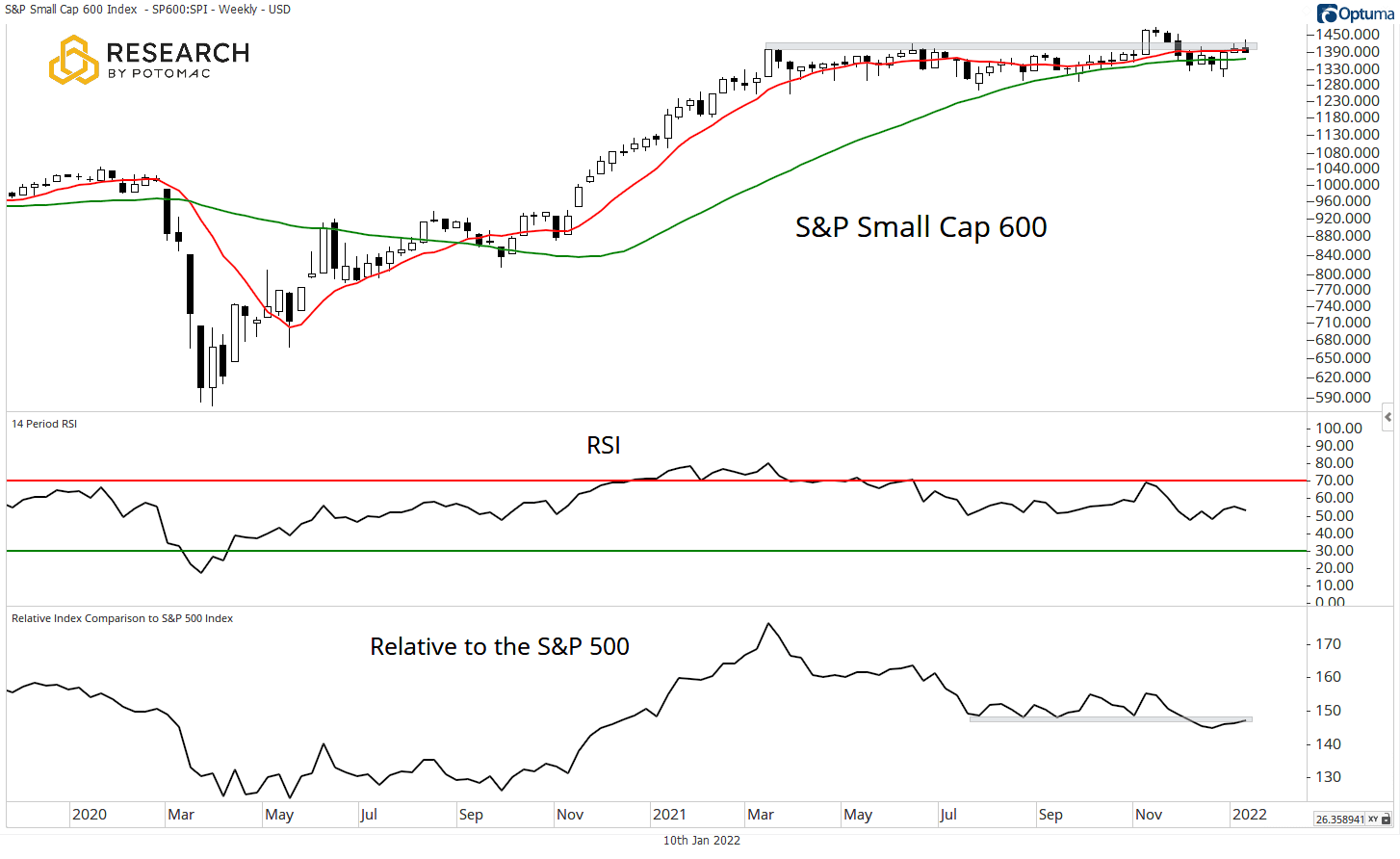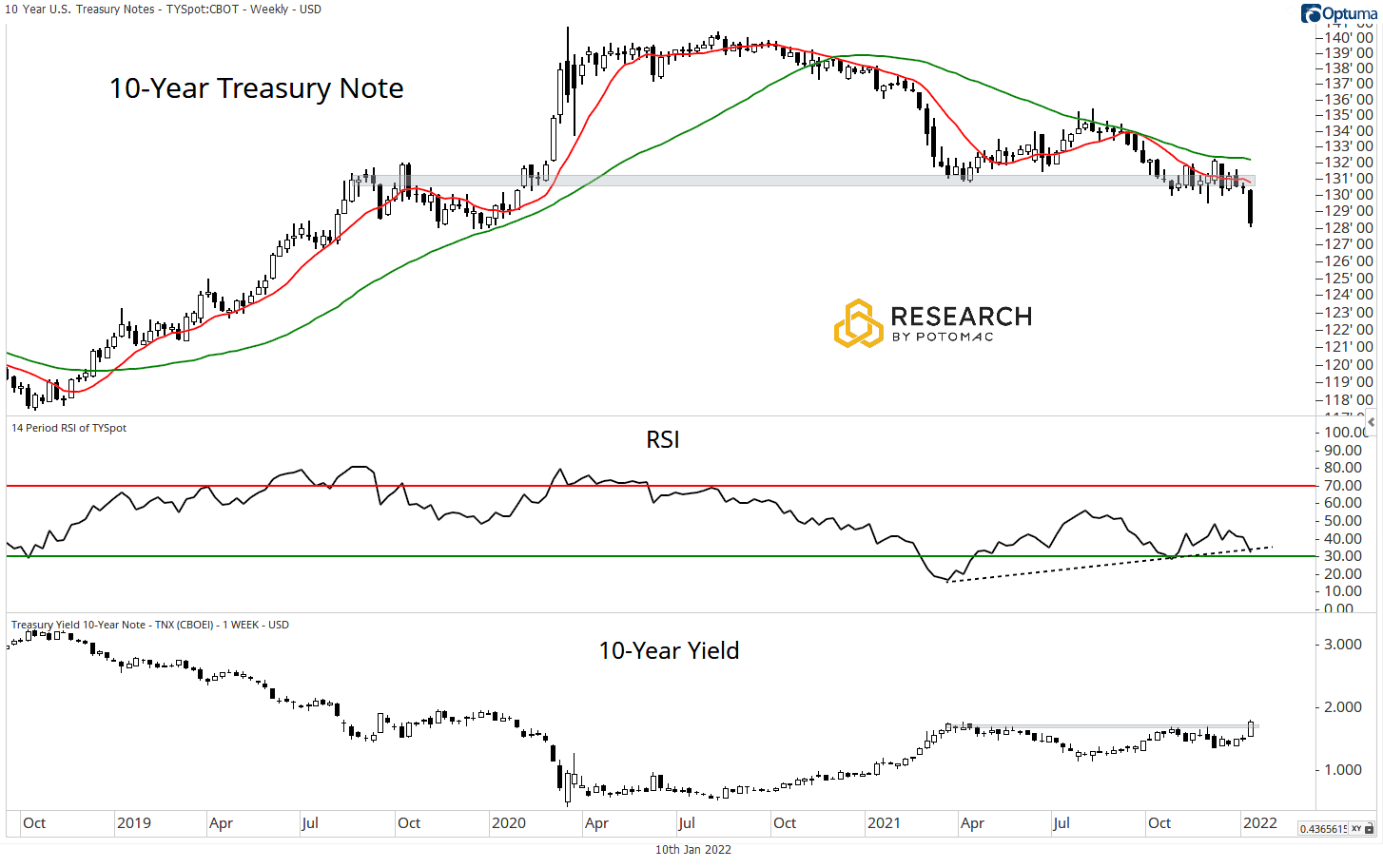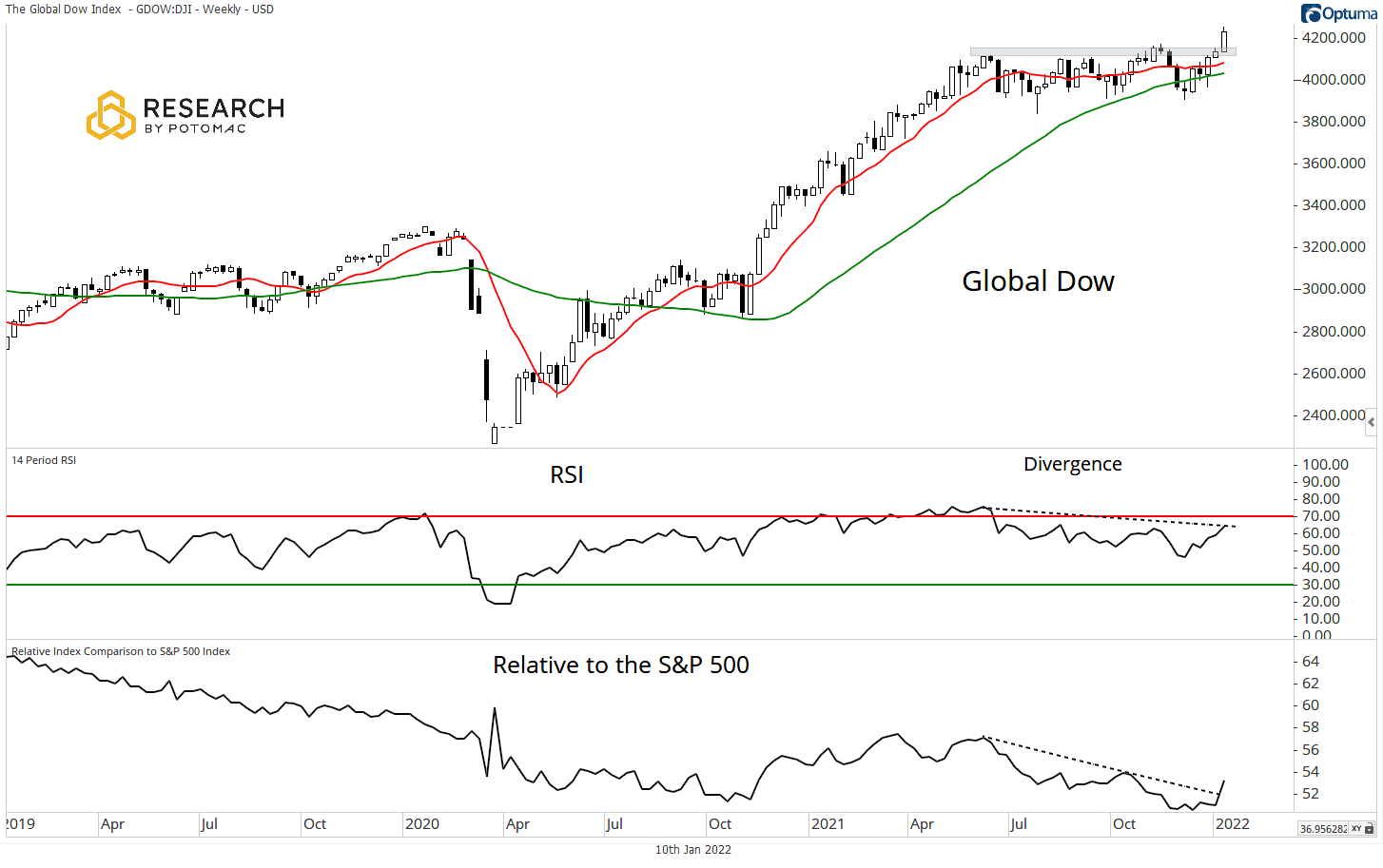
Key Points
- The S&P 500 Starts 2022 Under Pressure
- Small Caps Try to Breakout but Fail Again
- NASDAQ Composite Loses Relative Support
- Ten Year Note Finally Cracks
- New Highs for the Global Dow, Should We Travel Abroad?
U.S. Equities
The first weekly candle of the new year for the S&P 500 is to the downside, with a close at the low of the week. The rising 10-week moving average has been a good guide for the trend since it turned bullish following the COVID crash, and is it acting as support now. More important price-based support remains near 4,500, just above the rising 40-week moving average.
The 14-week RSI continues to trade in a bullish regime. There is a small divergence in place as the indicator did not make a new high with the index. However, this is simply something that we are observing unless/until price begins to break important support levels.

For a second consecutive week, the S&P 600 tried to push through resistance only to have its run halted by the bears. The flat 10 and 40-week moving averages paint a clear picture of what has been happening in this index for nearly a year, nothing. The 14-week RSI adds a confirming data point as it trades in the middle of the range.
On a relative basis, Small Caps are in consolidation, but are beginning to test resistance. This is a level that we are closely watching because, if broken, Small Caps will be in a strong position to regain leadership.

The NASDAQ Composite Index closed the week near the lows and below the 10-week moving average. The pressure was intense for most of the week, and we are closely watching the 40-week moving average and price-based support at 14,500. Should these levels give way, it will be hard to claim that the trend is bullish. The 14-week RSI has been under pressure for more than a month, despite holding in a bullish regime.
On a relative basis, the NASDAQ Composite is beginning to break support. The bears are taking the ball in this regard.

U.S. Fixed Income
The 10-Year Note (price) cracked to start the year, moving further below the 10 and 40-week moving averages after losing support at the 131 level. It seems that investors have decided to factor in the Fed’s policy shift after all. The bears are in control here, but we continue to note the RSI divergence, which remains in place despite the weakness clearly on display to start the year.
Note that the yield has broken resistance at 1.75%.

Global Equities
The Global Dow starts the year by breaking to a new high, above the rising 10 and 40-week moving averages after trading in consolidation since June. Bears will point to the RSI divergence, but we will defer to price and risk management. The trend is now bullish, and there are clear levels that can be used to determine if this view is wrong.
The relative ratio has broken a near-term downtrend and is now something that should be on investors’ radars.

Take-Aways:
Disclosure: This information is prepared for general information only and should not be considered as individual investment advice nor as a solicitation to buy or offer to sell any securities. This material does not constitute any representation as to the suitability or appropriateness of any investment advisory program or security. Please visit our FULL DISCLOSURE page.
